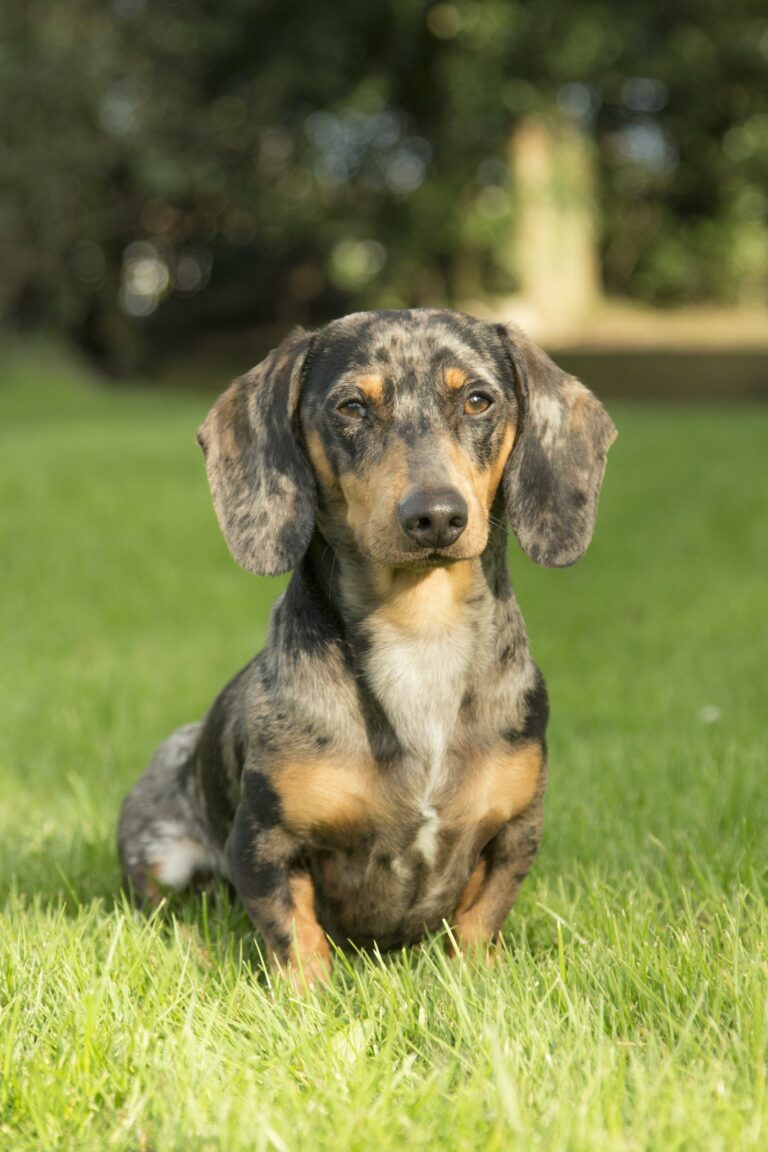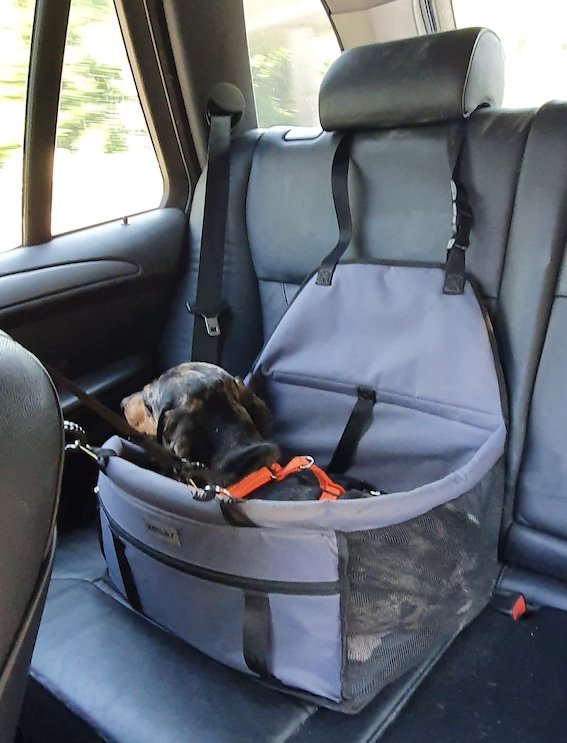How To Handle Dachshund Aggression Issues
I know, right? You’re probably looking at the cute picture of my dachshund and wondering how on earth such a small, affectionate, and lovable dog could ever show signs of aggression. That’s exactly what I thought too. But aggression is something we’ve definitely encountered with our boy over the years.
One of the more difficult situations we faced was earlier this year when we had to remove him from daycare. His behaviour had started to change, and the staff there described it as “dominance-based aggression.” While dominance is often mentioned as a cause of behavioural issues, I’ve since learned that it’s rarely the full story. In most cases, there are deeper reasons behind aggression, such as fear, anxiety, pain, or guarding behaviours related to territory or resources.
At the time, I also spoke to a behaviourist who confirmed that, in our dog’s case, the aggression was most likely caused by fear or anxiety. There were also signs that resource guarding and territorial feelings could be playing a role. The reassuring part is that these are all things that can be addressed through the right training and a consistent approach.
Recognising Aggression in Dachshunds
Aggression doesn’t always mean biting. It can show up as growling, barking, snapping, lunging, or stiff body language. In our dachshund’s case, we started to see patterns. He would become tense or growly in situations where he felt overwhelmed. He was also particularly protective of certain places like his bed or the sofa.
Understanding what aggression looks like, and when it happens, is the first step to resolving it. These behaviours are often a way of communicating discomfort or fear, rather than signs of a truly “aggressive” personality.
Possible Causes of Aggression
Fear or Anxiety
Fear is one of the most common reasons for aggressive behaviour. Dachshunds can be quite sensitive, and when they feel cornered or unsure, they may growl or snap in an attempt to protect themselves. This might happen around strangers, unfamiliar dogs, loud noises, or in crowded environments. Because of their small size, dachshunds often feel vulnerable, and fear can quickly turn into a defensive reaction.
Territorial Behaviour
Dachshunds are known for being protective, and this instinct can sometimes go too far. If your dog becomes reactive when people come into the home or when another pet approaches their bed, this could be a sign of territorial aggression. Our dachshund has had moments where he growled or snapped at visitors, especially if they sat too close to his space. Setting clear boundaries and slowly introducing new people into your dog’s environment can help reduce this behaviour over time.
Pain or Medical Conditions
Health issues can also lead to changes in behaviour. Dachshunds are prone to intervertebral disc disease (IVDD), which can cause significant pain in the back or neck. Other conditions like joint pain, dental problems, or ear infections may also cause your dog to react negatively to being touched or approached. If your dog suddenly becomes aggressive without a clear reason, a vet check-up is a good first step. You can learn more in our post on intervertebral disc disease (IVDD).
Lack of Early Socialisation
A lack of proper socialisation during puppyhood is another common cause of aggression in dachshunds. Dachshunds that were not socialised properly as puppies may be fearful or defensive in unfamiliar situations. A dog that hasn’t had positive exposure to other dogs, people, or environments may not know how to respond calmly. This fear can often look like aggression, especially when your dog is faced with a situation they haven’t learned how to handle.
Resource Guarding
Some dachshunds may exhibit resource guarding, a type of aggression where they fiercely protect items they value. This could include food, toys, or even their human companions. A dachshund might growl or snap if someone tries to take away their bone or sits too close to their favourite person. While this behaviour is natural, it can become a problem if it leads to regular outbursts. Training and building trust can help reduce this behaviour over time.
How to Manage Aggression in Dachshunds
Talk to a Professional
If your dachshund is showing signs of aggression, it is always a good idea to consult your vet first. They can check for underlying health issues and rule out pain as a cause. If your dog is physically healthy, the next step is to speak with a qualified dog behaviourist or trainer. We worked with a dachshund-specific trainer, and it was one of the best decisions we made. They helped us understand the root causes of our dog’s behaviour and gave us practical steps to work through them.
Use Positive Reinforcement
One of the most effective ways to improve behaviour is through positive reinforcement. This means rewarding your dog for calm and appropriate responses instead of punishing bad ones. For example, if your dachshund usually growls at strangers but stays calm during an interaction, offer a treat and praise immediately. Over time, this helps them associate positive things with situations that once caused stress. Avoid using punishment, as it can increase anxiety and make the behaviour worse.
Build Confidence Through Socialisation
Gradual, positive exposure to different people, dogs, and places can help your dachshund become more confident and less reactive. Start in low-stress environments and go slowly. If your dog is nervous around other dogs, begin with one calm dog in a quiet place. Reward relaxed behaviour and keep sessions short and successful. Socialisation doesn’t have to happen all at once. Small steps, taken at your dog’s pace, can make a big difference.
Establish a Reliable Routine
Dachshunds are creatures of habit. They feel more secure when they know what to expect. A consistent daily routine that includes feeding, walking, rest, and play can help reduce anxiety and improve behaviour. When a dog knows what’s coming next, they are less likely to feel stressed or out of control.
Create a Calm, Safe Space
Having a quiet spot where your dachshund can retreat when things feel overwhelming is really helpful. This could be a crate, a corner of a room, or even a specific bed. We’ve found that crate training, when done properly, gives our dog a space where he feels completely safe. Stock it with comfortable bedding, favourite toys, and a familiar-smelling blanket to make it inviting. Encouraging your dog to use this space during stressful situations, such as when guests arrive, can help prevent reactions before they start.
Make Time for Physical and Mental Exercise
A bored dachshund can easily become a frustrated one. Regular walks, play sessions, and mentally stimulating activities like puzzle toys or scent games help release energy and keep your dog balanced. Dachshunds are smart and active, so giving them both physical and mental challenges can reduce stress and prevent behavioural issues from developing.
Preventing Aggression Before It Starts
Preventing aggression is always easier than correcting it later. Early socialisation, gentle handling, consistent routines, and respectful boundaries go a long way. Learn to read your dachshund’s body language and give them space when they need it. Watch for signs of tension or discomfort, such as stiff posture or lip licking, and respond early to avoid escalation.
When to Seek Extra Help
If your dachshund’s aggression is frequent, unpredictable, or putting others at risk, it is important to get professional support. A certified behaviourist can help create a training plan that fits your dog’s needs and your home environment. Aggression can feel like a big hurdle, but with the right help, many dogs show significant improvement.
Frequently Asked Questions
Can dachshunds be aggressive by nature?
Dachshunds are not naturally aggressive, but they can develop aggressive behaviours if they feel anxious, threatened, or poorly socialised. Their strong personalities and natural protective instincts can sometimes lead to reactive behaviour, especially if their environment or upbringing hasn’t provided the right boundaries and support.
Will neutering or spaying help reduce aggression?
In some cases, neutering or spaying can help reduce certain hormone-driven behaviours, but it is not a guaranteed solution for aggression. If your dachshund is showing signs of fear, resource guarding, or territorial behaviour, addressing the root cause through training and behaviour modification is often more effective. Always consult your vet before making a decision.
Is crate training helpful for aggressive dachshunds?
Yes, crate training can be very helpful, as long as the crate is introduced as a positive, safe space. It gives your dog a place to retreat when they are feeling overwhelmed. This can help reduce their stress levels and prevent aggressive responses in high-stimulation situations. You can learn more about this in our post on crate training for dachshunds.
Can aggression in dachshunds be cured completely?
Aggression can often be managed and significantly improved, but it depends on the individual dog and the cause of the behaviour. With a consistent routine, positive training, and professional guidance, many dachshunds go on to live happy, well-adjusted lives. For some dogs, it may be an ongoing process, but progress is absolutely possible.
Should I punish my dachshund for being aggressive?
No, punishment can make aggression worse, especially if the behaviour is rooted in fear or anxiety. Instead, focus on positive reinforcement. Reward calm behaviour, provide safe spaces, and work with a qualified behaviourist if needed. Building trust is far more effective than using correction-based methods.
Helping Your Dachshund Feel Safe and Balanced
Aggression in dachshunds can be a difficult and emotional issue to face, especially when it feels out of character for a dog that is usually loving and loyal. However, in many cases, aggression is not a sign of a “bad” dog. It is often a response to fear, anxiety, physical discomfort, or uncertainty. These behaviours are your dog’s way of communicating that something doesn’t feel right, and they don’t yet have the tools to handle it calmly.
The good news is that with the right approach, most dachshunds can improve significantly. Identifying the root cause of the behaviour is the first and most important step. From there, using consistent routines, gentle training methods, and creating an environment where your dog feels safe can help reduce their need to react aggressively. Positive reinforcement, patience, and support from a trusted vet or behaviourist can make a big difference over time.
If you’re currently dealing with aggression in your dachshund, or if you’ve been through it in the past, you are definitely not alone. Many owners have faced similar challenges and come through the other side with a happier, more confident dog. Change doesn’t happen overnight, but with calm, steady effort and the right guidance, your dog can learn to feel more secure in the world around them.








